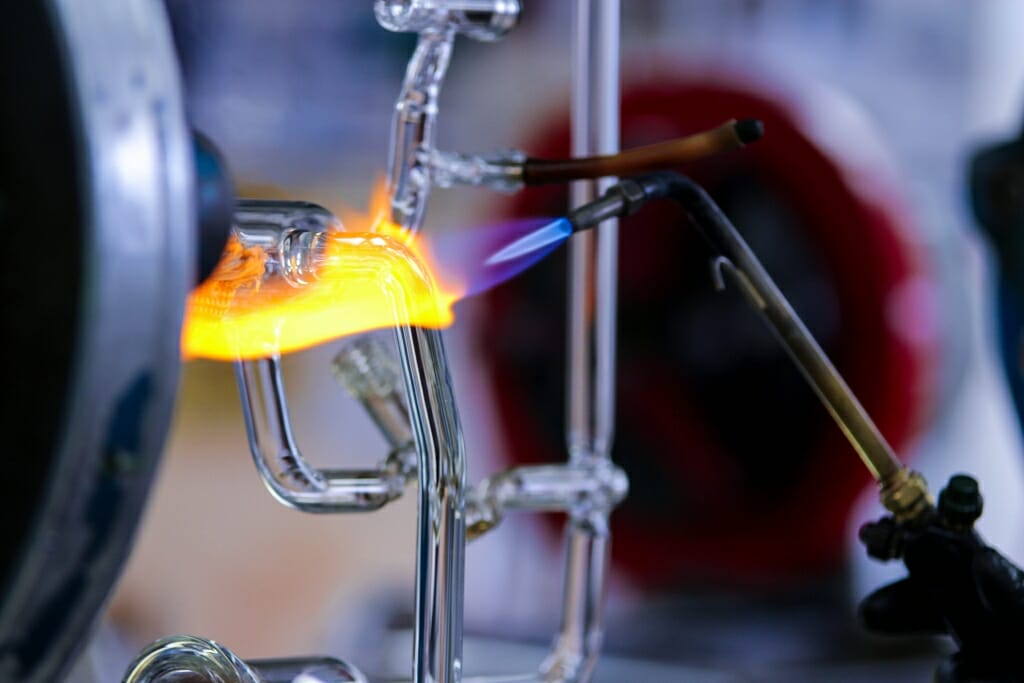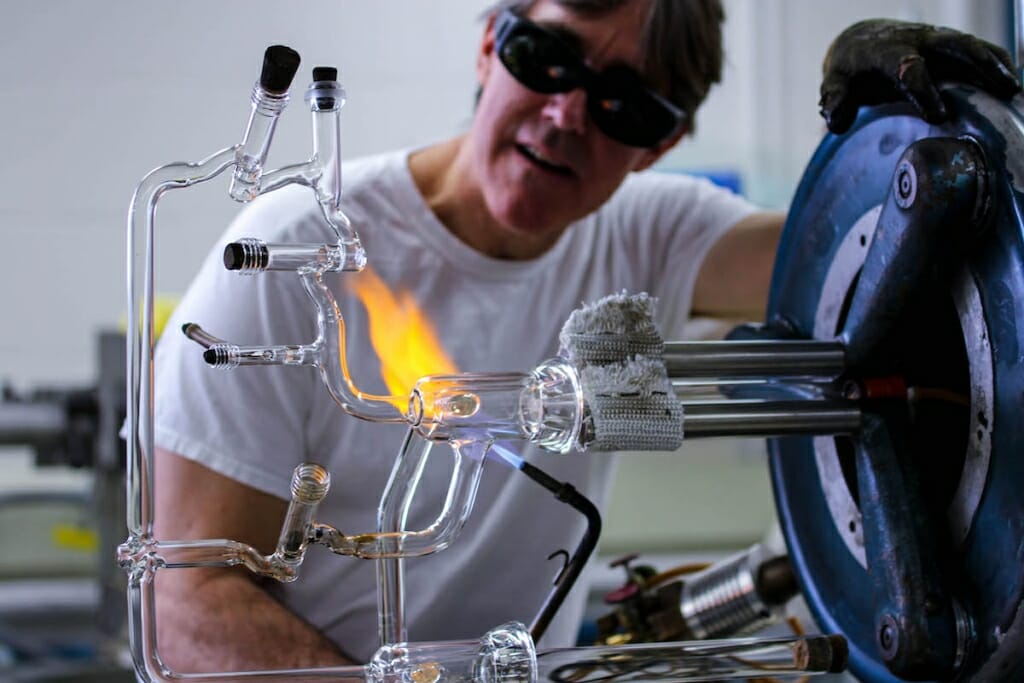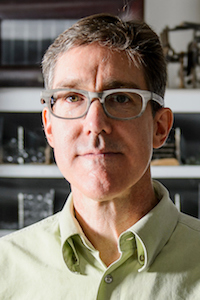Master glassblower’s art, work on exhibit at Madison Children’s Museum
The University of Wisconsin–Madison’s master glassblower, Tracy Drier, is displaying his craft at the Madison Children’s Museum in an exhibit titled The Crossroads of Art & Science.
The exhibit, on display through summer, is a compilation of glassware that Drier has made over time, each separate piece taking anywhere from 15 minutes to five days to make.
Drier, a scientific glassblower for the chemistry department, wants to increase interest in scientific glassblowing as a career choice by demonstrating the precision and artistry involved in constructing these delicate, almost ice-like glass instruments.
“Today, most people think these things are pumped out by a machine, so it’s also just to let people know this is a craft,” Drier says. “We live in a machine age, and these things are still handmade. You couldn’t make a machine do these things, and that is exciting! That is exciting for people; it’s exciting for me.”
“I love working with the Children’s Museum,” Drier says. “That’s really what this is all about. Getting people, especially kids, interested in the career.”
Because there is a shortage of professional glassblowers, most people who complete the two-year associate degree program easily find employment. An in-house scientific glassblower is an indispensable resource to large research institutions like UW–Madison. Not only do they create glassware customized to chemists’ specific experiments, but they can also quickly repair broken pieces of equipment, saving researchers the time and money they would have spent ordering a new piece by mail.

The Crossroads of Art & Science is currently on display at the Madison Children’s Museum. Ilia Guzei, Tracy Drier and Tim Dreyer
Working with Drier in person helps researchers communicate exactly what they need, something that’s much more difficult to do when ordering by mail.
“Here, they get in an elevator, come down, and work with me one-on-one. They have ideas, and they may or may not know anything about glass,” says Drier. “So, my job here is to educate and help them determine what’s going to be the best thing for their project, and to be able to do that, being one-on-one is important; it’s invaluable.”

Drier works with a type of glass, called borosilicate and specialized for scientific experiments, that can withstand sudden and extreme temperature changes. Photo: Kaitlyn Moore
Along with seven other glassblowers from around the country, Drier also recently had a glass apparatus on display in Brooklyn, New York, at the glass studio UrbanGlass. He hopes that these exhibits inspire people to take up his craft.
“I want people to know that there is a profession of scientific glassblowing, that it is a career choice,” Drier says. “I love it, and I want people to know about it.”
The Madison Children’s Museum is located at 100 N. Hamilton St. and is open from 9:30 a.m. to 5 p.m. Tuesday through Sunday.


